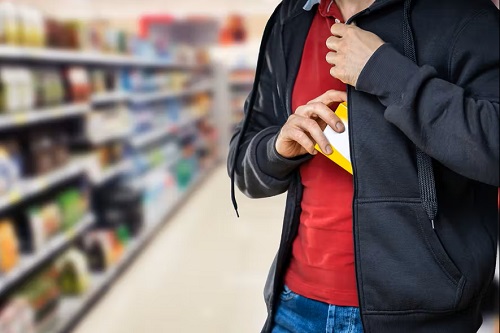
5.11.22 – SIW
Paris-based Veesion has developed a new anti-theft system that leverages retailers’ existing video surveillance infrastructure
Shoplifting has always been a significant loss prevention challenge for the retail industry, but it has become so pervasive throughout the course of the Covid-19 pandemic that it is now impacting stores in ways that once seemed unimaginable.
According to the “33rd Annual Retail Theft Survey” published last year by Jack L. Hayes International, despite Covid-induced lockdowns throughout 2020 that resulted in fewer customers visiting brick-and-mortar stores and thus fewer shoplifting arrests, the average shoplifting case value actually increased by 13% to $310.11 per incident. Overall, the report found that the retail industry now loses anywhere from $15-$20 billion annually to shoplifting, which translates to $28,000-$38,000 in losses every single minute.
In fact, pharmacy chain Walgreens last October announced that it was closing five stores in the San Francisco area due to the impact that organized retail crime (ORC) was having there.
While retailers have leveraged a variety of solutions to help curb shoplifting through the years, the deterrence effect provided by things like merchandise tags is simply not enough to deter today’s brazen thieves. To address this problem, Paris-based Veesion has developed artificial intelligence (AI)-based analytics technology that uses a store’s existing surveillance infrastructure to catch shoplifters in the act.
According to Hiren Mowji, Country Manager for the Americas at Veesion, the company is specifically using analytics based around suspicious gestures to be able to detect shoplifting in real-time. For example, if someone quickly places an item in their coat or pants, the Veesion software can determine whether it is an act of potential theft and alert the proper personnel.
“What we have developed are algorithms that will actually detect for specific gestures that people make when they shoplift and, obviously that was refined over a period of time, but it got to the point where the accuracy was high enough to make it an MVP – minimal viable product – that we brought to market approximately two and a half years ago,” Mowji explains.
Veesion began by selling its solution to independently owned shops and pharmacies in Paris, which allowed them to quickly scale across France and Europe more broadly. Today, approximately 1,500 locations around the world are using the company’s software to protect against shoplifting.
The rapid growth in adoption of their product has enabled Veesion to garner the attention of larger retailers, which has subsequently led the company to branch out into international markets, including the U.S.
“We went from these independently-owned, small corner, mom-and-pop-style markets to bigger stores, chain supermarkets – brands like Carrefour and Intermarché. They are not as big as your Walmarts of the world, but they are decent-sized chain grocery stores that have a presence or footprint of at least 1,000 locations in the area,” Mowji says. “Once that happened and we also connected with a few resellers, we never looked back. We have the product to a point now where we are selling it as a standalone solution that can integrate with pretty much any CCTV system out there.”
What Makes Veesion Different?
Unlike other AI solutions that require the end-user to learn a new software program or utilize a plug-in to an existing VMS offering, Veesion can send alerts to loss prevention or other store personnel through WhatsApp and Telegram, which are two of the most widely used messaging applications in the world.
According to Mowji, leveraging these messaging apps helps organizations avoid “tech debt,” which is a term used to describe the inundation of software platforms in organizations today and the various integrations into those platforms that are often provided through solutions like those offered by Veesion.
“Because of that, by design, we didn’t create our own dashboard or our own application. We didn’t want to have our customer learn a new app or have something they continuously need to log-in to just further complicate the issue,” he says. “We felt like the solution we’re providing is sort of lightweight enough from a technical perspective to where we don’t need to develop our own application. We just need a vehicle to basically send the alerts to the store associates, store management or whoever that may be.”
As part of a demonstration, Mowji showed how in one of the company’s U.S. deployments – a well-known hardware store chain – they were able to create a group for one of their individual locations in Telegram and send GIFs of incidents to the mobile devices of employees in that store.
“The app can be accessed on any device, so you simply download the app, we create a group for that particular store, the store decides who they want to put in the group and they can do this by having the associate download the app and register,” Mowji explains. “Once your group is created and people are added, you start receiving these alerts and when you click on the GIF, it shows you that loop of video to allow you to see what happened and whether or not this person is shoplifting.”
The only piece of hardware that Veesion requires retailers to install, according to Mowji, is a “mini-PC” that does a lot of the processing locally for their analytics.
More Applications Forthcoming
While the company is currently focused on curbing shoplifting, Mowji says they envision broadening the scope of their analytics to a wide variety of other applications.
“We are looking way beyond just retail or shoplifting if you will,” he adds. “We are still in the infancy of the solutions that we are going to see over the next couple of years when it comes to video analytics, so we are already looking at workplace safety – not only for retail environments but different types of worksites, maybe construction, manufacturing or things like that.”
For more information, visit https://veesion.io.
Joel Griffin is the Editor of SecurityInfoWatch.com and a veteran security journalist. You can reach him at joel@securityinfowatch.com.
